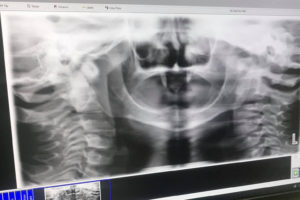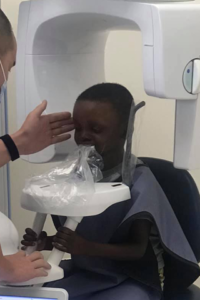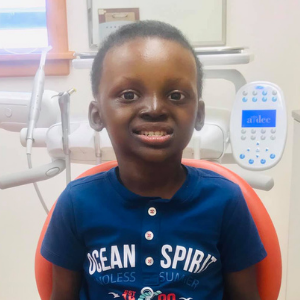Hypodontia is one of the typical symptoms of ectodermal dysplasias. It means that one or more teeth are congenitally missing and may be small. For many affected individuals, it’s common to have just a few teeth.
At the National Foundation for Ectodermal Dysplasias, we have always advocated that children – and adults – with ectodermal dysplasias get the dental treatment they need to restore or replace their teeth. There are many benefits of dentures for kids.
Where to Begin
You will want to work with your pediatric dentist to develop a treatment plan for hypodontia that is right for your child. It’s important to know what your dental treatment options are. The Parameters of Oral Health Care for Individuals Ectodermal Dysplasias outlines the different kinds of treatment that are appropriate for your child’s age.
After a thorough consultation, the dentist may recommend dentures. If you are new to ectodermal dysplasia, you might be overwhelmed just thinking about your child having to wear dentures. We get it! But, we’re here to walk you through what you need to know.
Things to Know When Your Child Needs Dentures

Beau Meyer, D.D.S., Ph.D., a pediatric dentist at The Ohio State University and a member of the NFED Scientific Advisory Council, has written a new resource for NFED families titled, Things to Know When Your Child Needs Dentures.
According to Dr. Meyer, many children with developmental anomalies or congenital conditions like ectodermal dysplasia are missing some, most, or all of their teeth.
“Complete or partial dentures are good treatment options to replace the missing teeth.”


In the article, Dr. Meyer explains three common types of dentures and how and why they are used to treat hypodontia. The dental team will consider the number of existing teeth and their overall status.
Newer technologies mean there are different ways to make the denture, according to Dr. Meyer.
“The process is somewhat variable according to the denture type, the dentist’s experience, and the child’s temperament.”
Read the full article to learn more about how to prepare for the denture making process.
Download Full ArticleFrom Anodontia to Hypodontia

CJ Castro is a five-year-old boy affected by hypohidrotic ectodermal dysplasia. When he was 1, an x-ray showed that he did not have any teeth. Anodontia is the term for this condition when there is a complete absence of teeth.
But that changed! Amber, his mom, reports that recent x-rays showed that CJ will have two teeth, his canines. The teeth, which are pointed, have not yet erupted.
To treat CJ’s hypodontia, his parents decided to get him his first pair of dentures, Amber said.
“The dentist knew of ectodermal dysplasia. We’re currently in South Korea at Camp Humphreys. We had an amazing experience with them.”
CJ has been a real champ throughout the process, Amber says.
“He gained so much confidence since he got his dentures! He’s always asking me to put them in.”

Super Smiles
CJ, along with kiddos like Hazel and Keegan, are living proof that children can successfully wear dentures to overcome their hypodontia.
If your child is having a harder time adjusting to this new appliance in their mouth, check out 8 tips for getting your child to wear dentures. If you have other questions about hypodontia or dentures, don’t hesitate to contact us. We would be happy to help you understand the process and point you towards resources.
Download Full Article
am so happy to see this article- am not alone in this world. My son has D. Syndrome and does not eat properly or talk properly since a dentist took out too many teeth-( not being expert in his condition). he sucks his cheeks in and looks awful -Before op he looked cute.!!! All dentists have been telling me ‘ no dentures or implants till adulthood’ Now i see that he does have a chance!!! how do i go about this in uk? or is there better place in Europe? how can i get funding?
Hi, Bella. Thanks for reaching out to us! For assistance in the UK, I would recommend reaching out to the Ectodermal Dysplasia Society. Here’s their website: https://edsociety.co.uk/.
Additionally, while these are more focused on treatment in the U.S., here are some resources we have developed to help patients talk about treatment with their healthcare providers: https://nfed.org/treat/health-care-provider-resources/
Let us know if you have further questions!
– Veronica